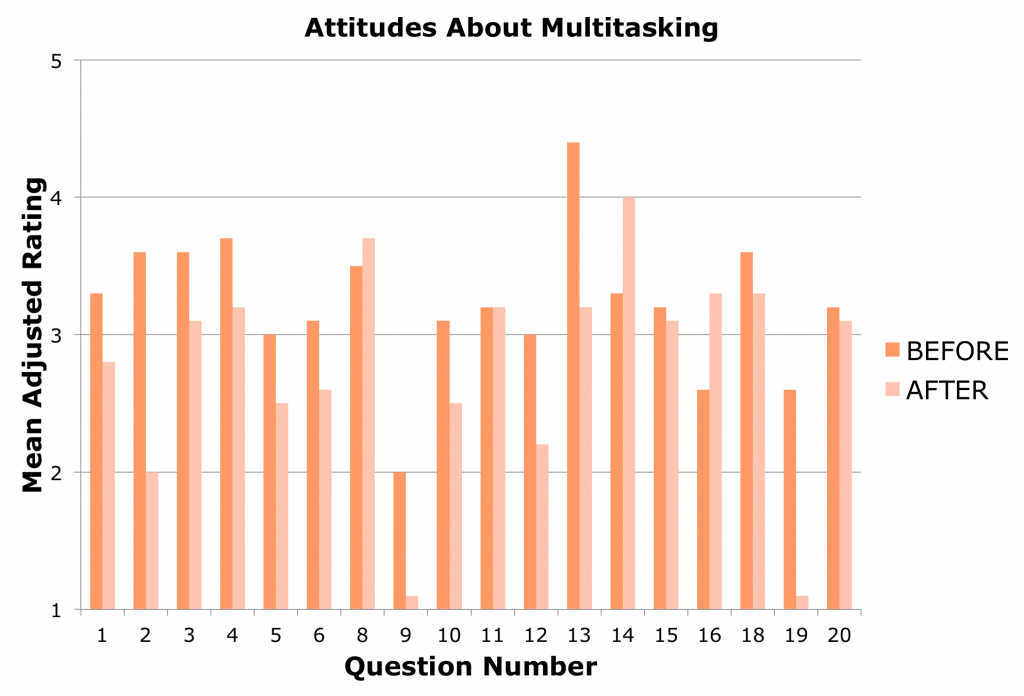Multitasker is probably the most fun game we generated over the summer, which is not a surprise considering we hijacked the mechanics from popular board games. The game was created to teach students about the bottleneck that occurs in decision-making. Even though we are capable of processing multiple stimuli at the same time and making multiple simultaneous responses, we can only make one decision at a time. Psychologists call the delay between decisions, the psychological refractory period. We predicted that students’ attitudes toward multitasking would change after playing a game that pushed their decision-making abilities to the limits.
Ten high school students ended up participating in our experiment. They played a game where they could perform up to four tasks simultaneously. The tasks included (1) molding figures with clay, (2) drawing pictures, (3) guessing a mystery word, and (4) performing various physical activities like hopping on one foot. Attitudes were assessed using pre- and post-game surveys about multitasking. Subjects indicated their attitudes using Likert scales ranging between 1 (highly unlikely) and 5 (highly likely). For each survey, ten questions (e.g., “I feel that it is possible to accomplish many things at once”) were included with their opposites (e.g., “I do NOT feel that it is possible to accomplish many things at once”). The twenty counterbalanced questions were used to verify the reliability of the survey. After data collection, the sign of the responses was adjusted so that all responses had a similar polarity (i.e., increased ratings reflected positive attitudes toward multitasking). Data were combined across all subjects for each question (Figure 1).* For most questions, ratings during the post-game survey decreased relative to the pre-game survey (paired t-test, p = 0.004). Data were also combined across subjects and questions (Figure 2). Mean ratings during the post-game survey were lower overall than for the pre-game survey (t-test, p < 0.0001). Error bars reflect 95% confidence intervals.
Our data reinforce the notion that people believe they can multitask, but those attitudes can be changed via experience. Teenagers are particularly vulnerable to negative consequences of divided attention because they are more frequent users of mobile devices, and they typically lack the experience to keep from using those devices in risky situations. The game was the most fun to play because people were physically active. In an academic environment where students are sedentary, the more physical activity your game demands the better.
*Data for one question (7) and its mirror opposite (17) were removed because they were ambiguous. The pattern of statistical results was similar when they were included (all p < 0.05).
Figure 1
Figure 2




